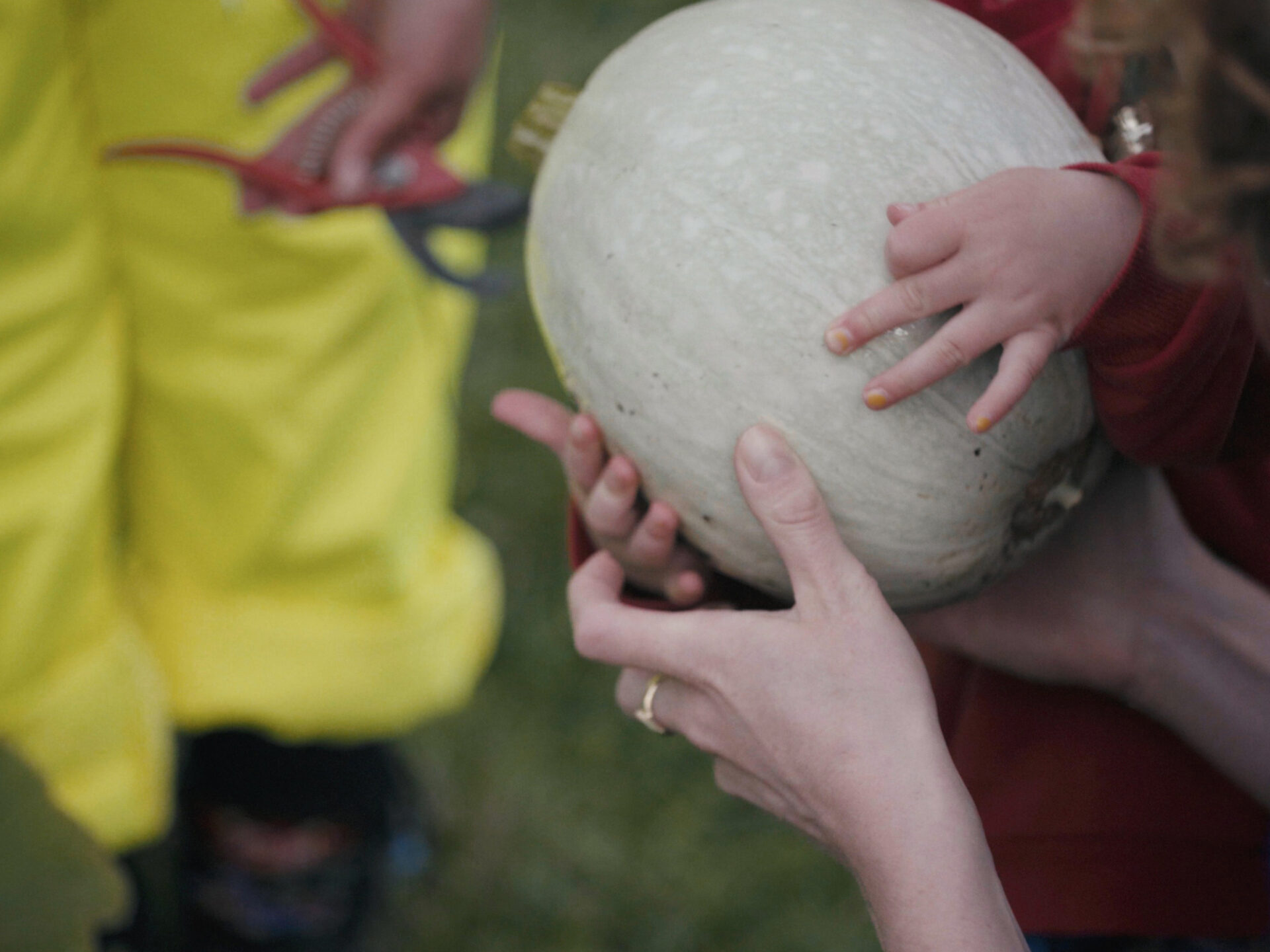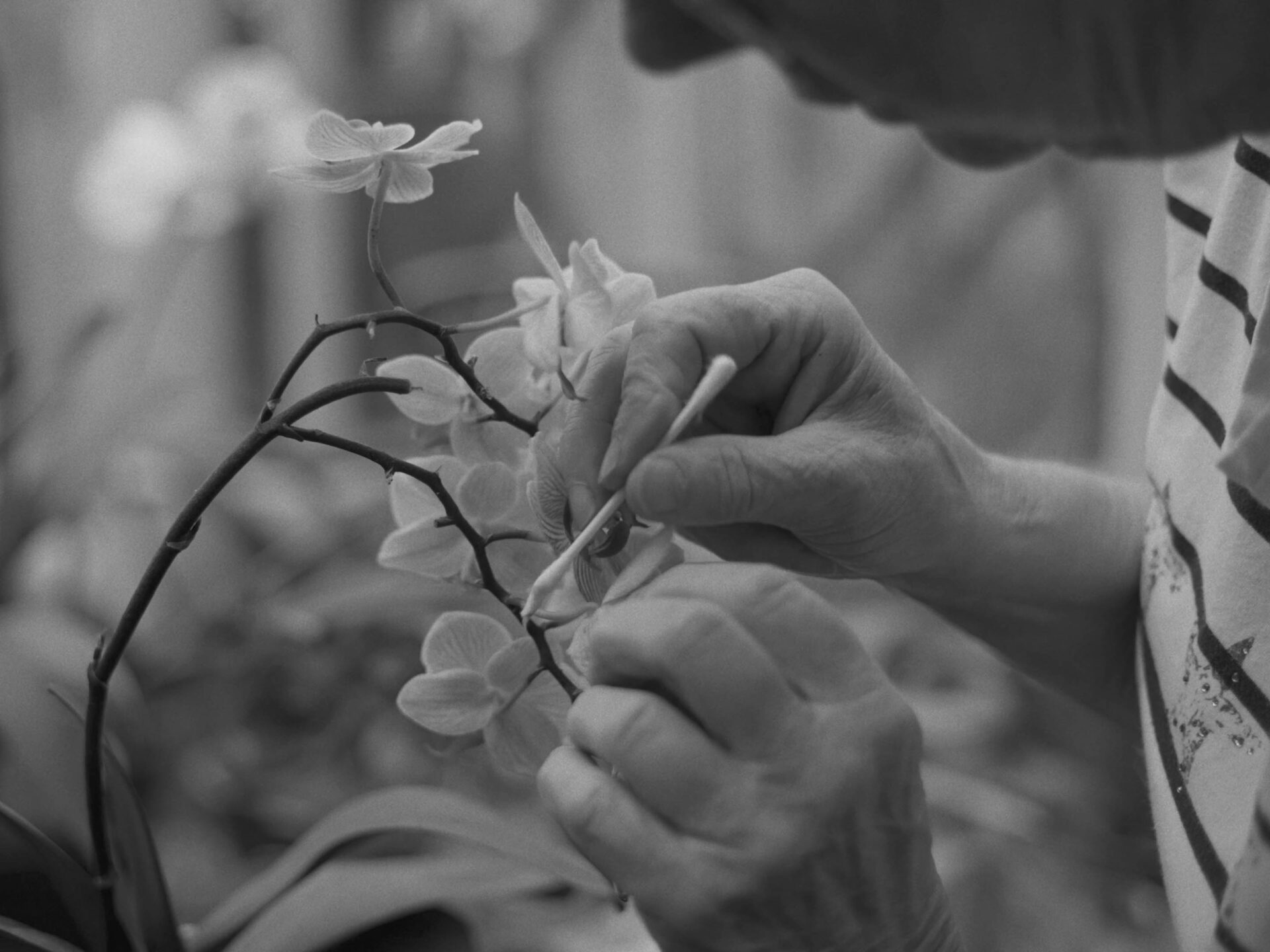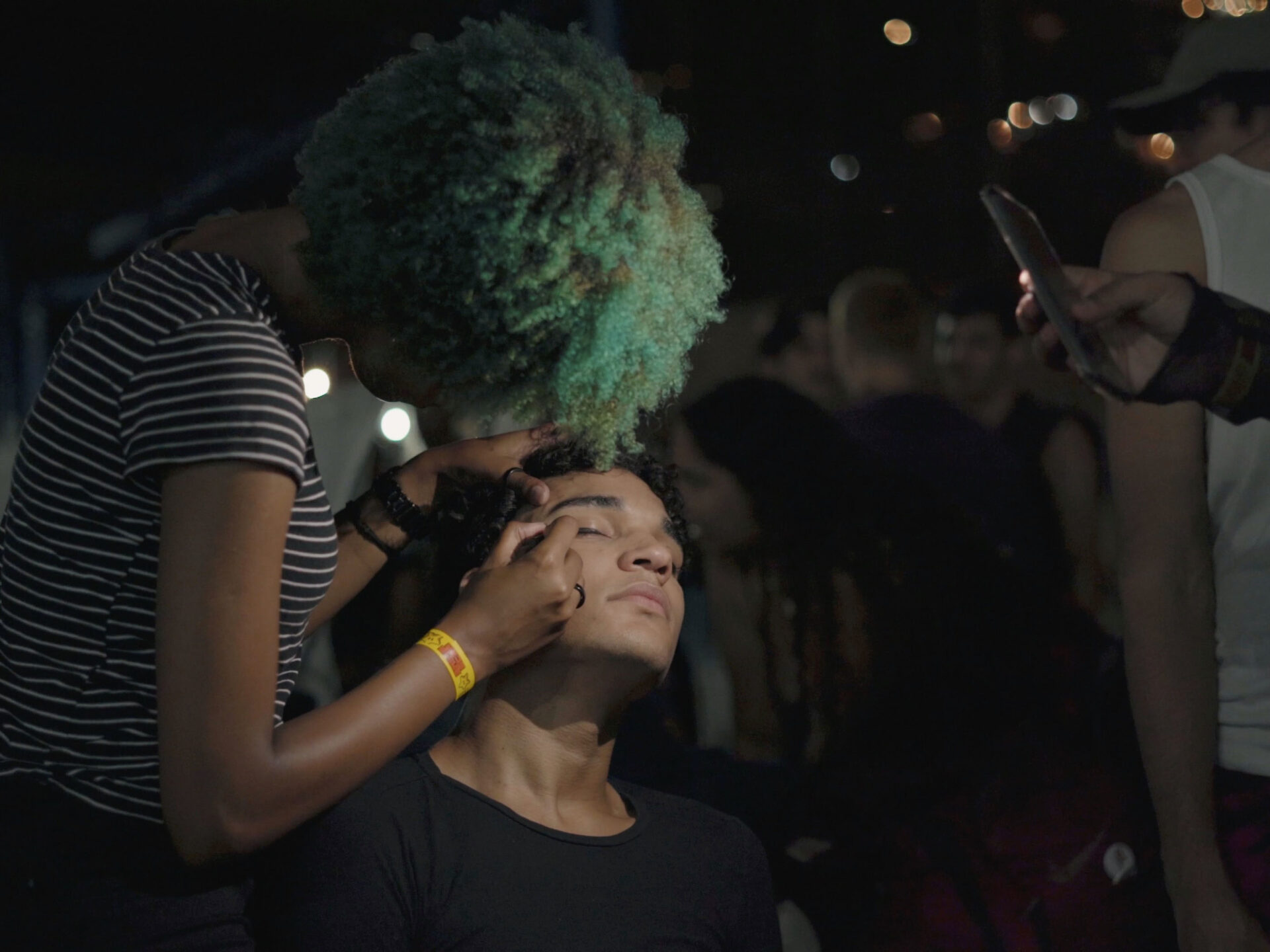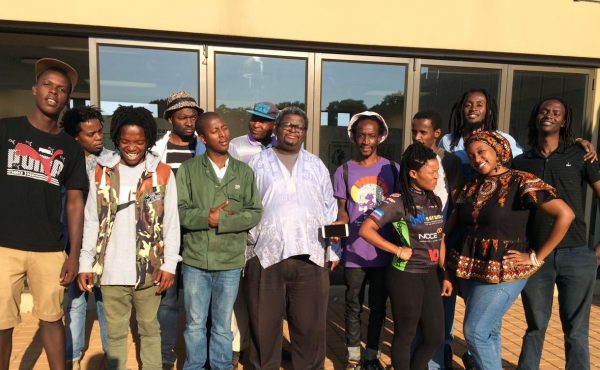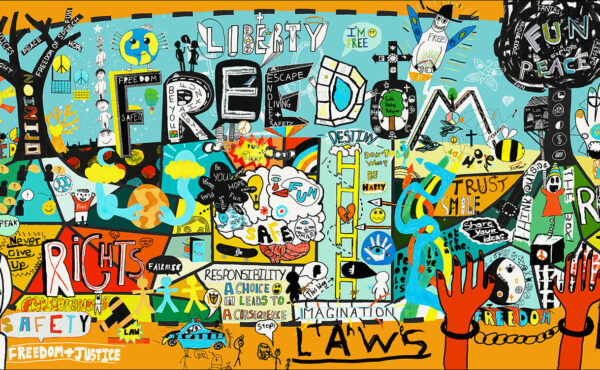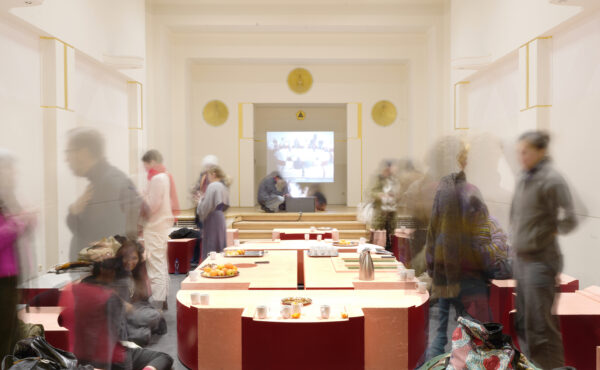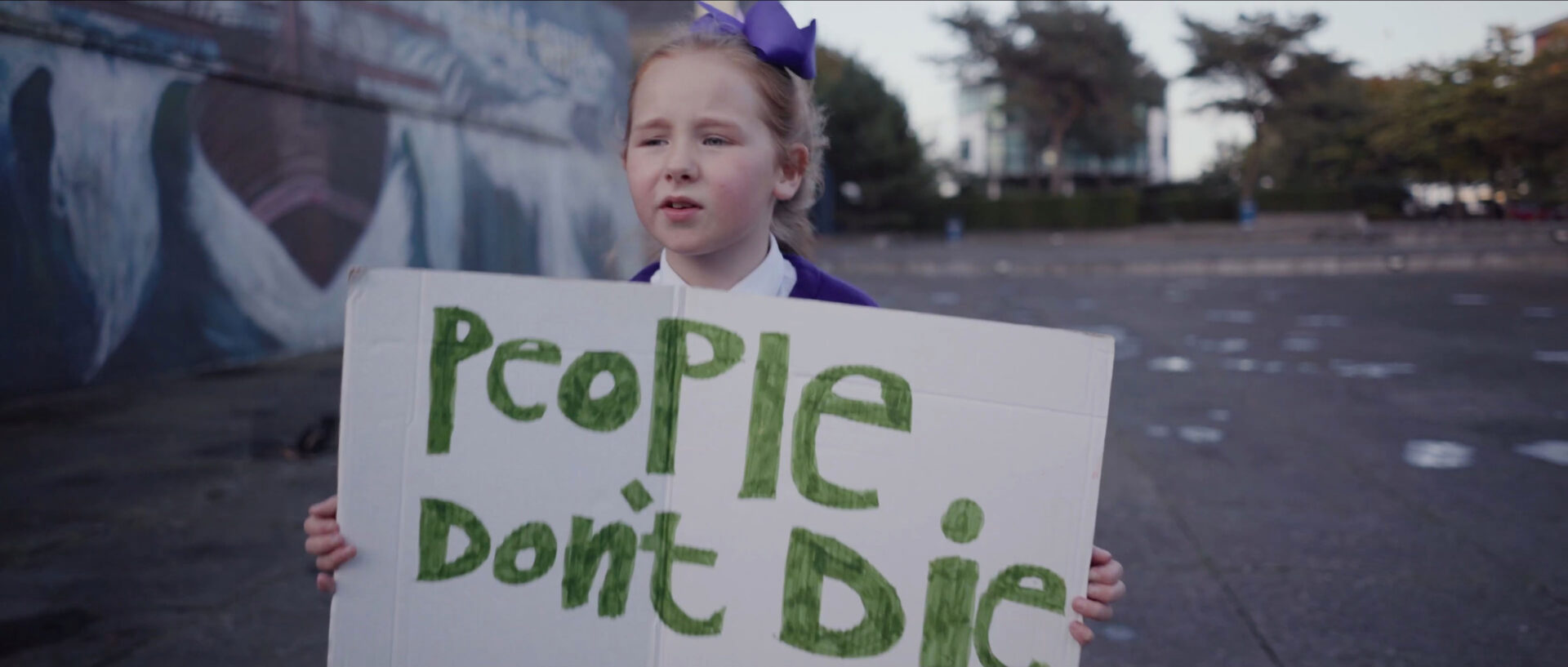
Talking to Sol Archer: ‘I’m curious about what people are curious about’
By employing techniques of ‘ethnofiction’, artist Sol Archer skillfully carves out space for the gradual revelation of colonial histories and their present-echoes. Mainly working with moving images, his works allow communities to narrate their own stories. ‘I prefer letting things surface in the course of conversations, rather than presenting the entire history outright.’
Artist and filmmaker Sol Archer started working with communities during his studies at the Piet Zwart Institute (2013-2015) in Rotterdam. Traditionally assuming the role of an observer and listener, he is progressively becoming comfortable with directing and creating frames. Across various projects, it is apparent that Archer deliberately creates space for encountering the intricacies of present-day complexities entwined with the colonial histories that have molded our human world, thinking and aesthetic experiences. This subtlety is discernible in his more cinematic works, which were developed during residencies at Kunsthuis SYB and Künstlerdorf Schöppingen.
What sparked your interest in colonial histories?
‘I’m from the UK, and I believe that, there, history is really not addressed. At least not in the sense of how it produces itself through the psychological frameworks of colonialism. It’s one of the things that once you begin to recognize it, it becomes very hard to stop. It’s a constitutive reality for everyone, it influences so much of who we consider ourselves to be, and in the cultural sector, we inadvertently perpetuate tastes and structures created by it. It’s a challenge, also in my work with communities, because I want to look closely at the different histories and at the same time respect people’s need for joy. So there is a constant tension in addressing these histories while maintaining enough distance from them.’
Is this where Ethnofiction comes into play?
‘Ethnofiction asserts that objectivity is merely a style: a genre or an aesthetic. Jean Rouch, to whom the term was first kind of attached, and other filmmakers propose that as people are well versed in fiction, one can discuss people’s reality using the language of fiction. This blurs the line between their internal reality and the way they knowingly reproduce it for the camera. They choose themselves what they show, which creates agency for the people that are documented and holds the potential for them to become collaborators. That means that the means of representation can be distributed among collaborators, which is very different from more traditional documentary forms. These days, almost everyone knows the rules of a documentary, feature film, or podcast. They recognise the genre, and the way it produces meaning and narrative, so as a maker you can play with these rules and break them.’
‘I try to capture the lived narratives of the communities I work with’
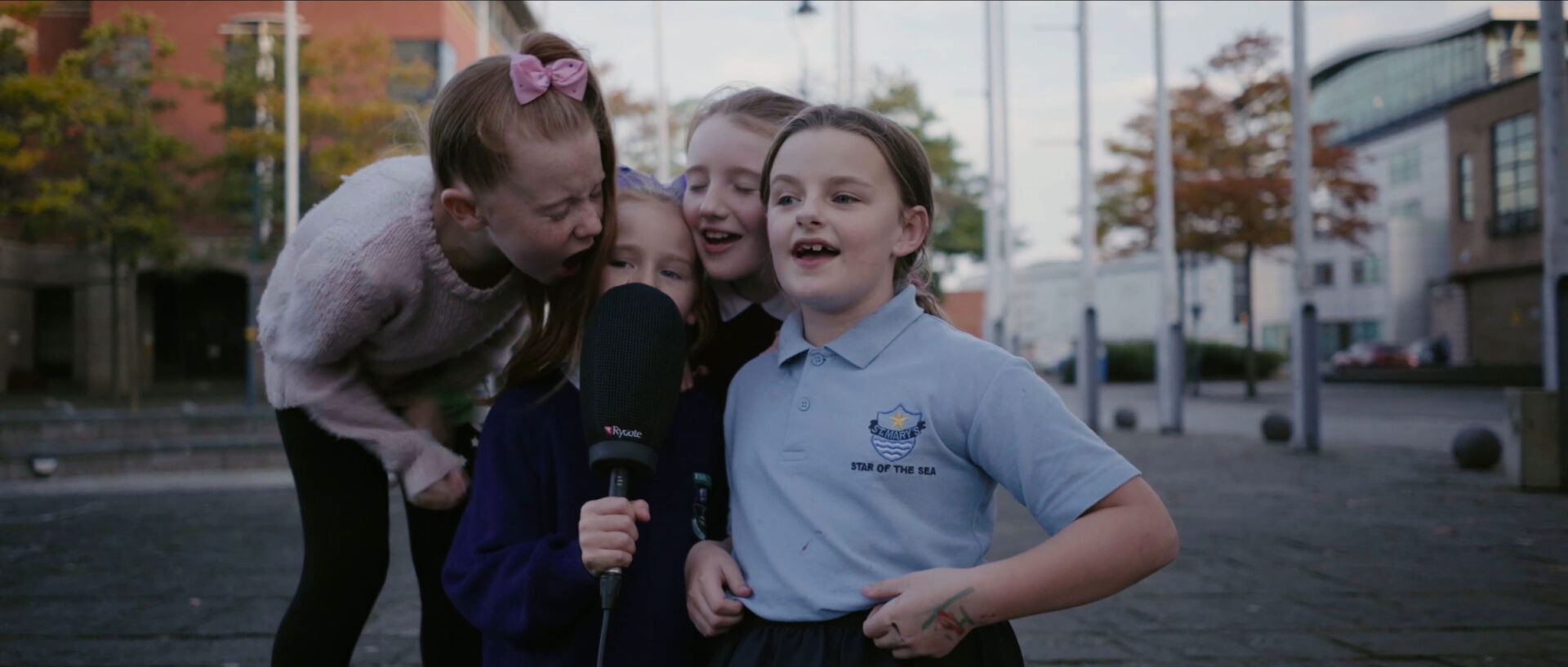
Are you creating frameworks in which people can talk easily about their realities?
‘Yes, in the project Not only the earth we share (2018-2021), for example, I tried to play with having the history emerge throughout it. You could call it “dialectical editing”. While filming walks with locals through the streets of Belfast, they would casually chat about joyful childhood memories. Then, suddenly, one of them would point out a house, triggering memories of being forced to move and later seeing soldiers shooting from that house’s roof. Alternatively, the conversation might abruptly shift to their experiences moments before a car bomb exploded on a corner we were passing, killing some children. I think that introducing such conversational turns serves as a shock element. I prefer allowing stories to emerge naturally during conversations, rather than presenting the whole history. This way, I can capture the lived narratives of the communities I work with.’
How did this three-year project in Belfast come about?
‘It originated from an invitation extended by the curatorial group Household Belfast, known for placing artists within neighbourhoods. My project is about the neighbourhood Sailor Town, that was demolished in the 1960s for a city development plan that was never realised. I was interested in how the connection to a Sailor Town identity transcends generations. This exploration involved spending time together, recording conversations with elderly individuals who had been evicted in the 1960s, and conducting film workshops with children in a social housing block within the failed development, situated somewhat enveloped by the ports. Unfortunately, the process was cut short by Covid-19, making it impossible to work safely with the elderly. In the end, we had to compile a film using the fragmentary preparatory materials we had gathered while getting to know the different groups.’
What about Belfast’s history is most interesting to you?
‘That’s a big question. In a way, it revolves around the impact of the 800-year British occupation of Ireland, the repression leading up to Irish independence in 1921, and the Troubles – a military/paramilitary conflict spanning from the late 1960s to 1998, triggered by the British government’s suppression of civil rights movements in the region. Walking around Belfast is a peculiar experience for me; the vernacular is strikingly familiar from other post-industrial towns in the UK, yet citynavigation has intentionally been made difficult. To a large extent there are still so called ‘Peace Walls’ and abruptly impassable motorways that divide neighbourhoods. Anywhere you go, you must first traverse the city center due to these barriers, and up until 1999 the center was sealed off from 8 o’clock at night!’
What do these walls and blockages look like?
‘Some neighbourhoods have fancy-looking gateways at their entrances. They look nice, until you learn that they are designed to match the width of a Land Rover, the preferred British army vehicle in the region. This enables a military vehicle to block off the entire neighbourhood just by stopping inside the gate. The urban fabric of the city is intricately intertwined with military control infrastructure in ways more direct than any other European city I have visited. While racialised and social controls are constitutive of social planning elsewhere, they are often less explicit. I believe that these intertwined material and social histories have given rise to very particular forms of sociability in Belfast.’
How do Ireland and Britain deal with this history?
‘These histories persistently face denial from the British government. Just last year they passed The Northern Ireland Troubles (Legacy and Reconciliation) Act, providing protection to British Soldiers from investigations into crimes committed during the conflict, including allegations of torture and murder. Ireland has taken Britain to the European Court of Human Rights over this matter, a move that by no coincidence I’m sure, aligns with the British government’s attempt to exit the court as part of Brexit. As someone raised in Britain, growing up in England during the Troubles, my time in Belfast has really made visible to me that my education and information were shaped to construct my self image in opposition to knowing things like this.’
It is tangible in your works that you want to get as close as possible to what is going on, often using what appears to be a hand-held camera. Is that indeed the case?
‘Yes, in the past that was true. I think initially, it had to do with my desire not to impose a fixed frame or scene, but rather to be responsive to what was going on. These days I feel more comfortable with orchestrating things. I use tripods more frequently now, although I almost exclusively use prime lenses. These lenses have a fixed ratio and angle of view, so when I want to get closer to a subject, I have to physically move the camera. This creates an embodied relationship with the distance between the camera and the subject, which I believe viewers consciously or unconsciously experience, situating them in the space they are observing. The impression of handheld filming may also stem from my preference for partial framing, details, close ups, and so on.’
‘I almost exclusively use prime lenses. These lenses have a fixed ratio and angle of view, so when I want to get closer to a subject, I have to physically move the camera. This creates an embodied relationship with the distance between the camera and the subject
Have you always worked with the mediums of film and photography?
‘I am actually trained as a painter, which is a bit like my dirty secret. I left painting already during my Fine Arts studies at the University of the Arts in London. I felt constrained by my limitations as a painter and wanted to actually manipulate space, to delve deeper. Initially, I made architectural models that I sent to friends for photographing in various locations all over the world, envisioning it as a proposition that spans distances. Then I tried to do similar things with text gathered from the internet, trying to produce a narrative montage from fragments. It was during this time that I started working with moving images, approximately two years before I came to Rotterdam to follow the Masters of Fine Arts program at the Piet Zwart Institute.’
Can you give an example of how you find the communities you work with?
‘In general, I am curious about what people are curious about and how people collectively create a space around their attachment to something. Filming gives me a motive to seek out encounters. How the relationship with a community starts though really varies, sometimes by invitation, sometimes by chance, sometimes because I am looking for something specific. I met the Kpop dance groups I worked with in Brazil, for example, while researching an entirely different project, delving into the Theatre of the Oppressed through workshops. In Brazil, Augusto Boal, the founder of the Theatre of the Oppressed, had become a councilman in Rio de Janeiro after the dictatorship and used this participatory theatre practice to formulate new laws for the prefecture. During my time studying at the Centre for the Theatre of the Oppressed, I stumbled upon Kpop dance groups rehearsing routines using the windows of the Museum of Modern Art as mirrors. Intrigued, I went outside and started talking to them, becoming more curious about the way they informally claimed space than about my initial plans.’
How do you make sure that everyone is okay with how they are being portrayed by you?
‘I try to make sure that everyone involved sees the final outcome, usually during a first private viewing. Sometimes that’s not possible, for instance because people have passed away or only participated briefly without leaving contact details. Since covid 19 I have been thinking more about questions of safety and how to establish clear agreements on the terms of collaboration in advance. There is an element of risk involved for a community, especially if they are marginalised, in increasing their visibility through documenting and sharing their practices. I try to recognise risks and have a full discussion about risks and interests and how to work together.’
Do you ever lose interest in communities you started working with?
‘It can be tough at times. If people are enthusiastic about something, it’s easy for me to become excited as well. I’m particularly drawn to amateurism, where their interest is evident because it is not driven by financial gain or external motives, but rather by a shared emotional attachment amongst themselves. For instance, last year, I was filming with a dog dance training community in Germany for Devotional (2023), but I couldn’t see how this activity created an affective space amongst the participants. Of course, they were supporting each other and the social aspect was also important to them, but how that community builds itself was not visible to me until the competitions. That is why I became more interested in the communication within the individual love/control relationship between the performing dog and their trainer. These dogs, being really eager to please, are completely dependent on their trainer. This creates a really steep power-dynamic between them, and in this example my interest and position kind of shifted a lot during the process.’
‘There is an element of risk involved for a community, especially if they are marginalised, in increasing their visibility through documenting and sharing their practices. I try to recognise risks and have a full discussion about risks and interests and how to work together’
What are you currently working on?
‘I am preparing for an upcoming project in Brazil. It is delving into the construction of the divide between nature and culture – how these zones have been separated and how that justified the construction of racialised hierarchies, enclosure, and extractive capital. This division permitted slavery and genocidal policies to happen, as some individuals were deemed less human and closer to nature, allowing land to be seized for cultivation as if it were ‘in a state of nature’. I am looking at how colonial image practices were instrumental in producing this dualism and how they continue to haunt the ecological and social imagination in the present. I am looking at image practices from the Dutch West Indies Company, which occupied North Brazil from 1630 to 1654, and there built the Netherlands’ first Slave Society. This investigation involves studying landscape paintings of Brazil by Frans Post, exploring sonic ecologies and music, and working with botanical garden and museum maintenance. There is a specific natural reserve in Piaui, an area once occupied by the WIC, that I am particularly interested in exploring. I want to work with musicians and archaeologists there to see how we can think about ecological relations through sound, moving away from a reliance on vision as the sense of the ecological imaginary, and going into sound and vibration.’
Why did you choose that particular park?
‘I am fascinated by this park because of the presence of 30.000-year-old cave paintings there, which include the earliest known depiction of a plant. The paintings are very rhythmic, depicting groups of people and animals mixed together in ways that suggest a very different world from the norms of the Enlightenment image regime. To establish the park, though, people living there were displaced and their economy was replaced with one centred around tourism. Understanding how the relationship of those people with that land still exists culturally, through music and other ways is really interesting to me.’
Are you again planning to work with communities in Brazil?
‘Yes, but it’s a bit more complicated because this research is more academic. That means I am engaging with very different sets of communities, primarily researchers who specialize in various fields such as painting restoration or archaeology. These researchers may not necessarily meet, given their diverse specialisations. I will be filming and discussing with museum workers in The Netherlands and Spain, where paintings by Frans Post are held, and with painting restorers in São Paolo. I am also collaborating with botanical gardens in Belgium and Germany that have archival relationships to the context. All these people I am engaging with, even though they are an expanded professional community, only are abstractly in contact, so I guess I’m positing a sort of discontinuous collectivity through this.’
What makes landscape paintings in particular interesting to you?
‘I think landscape painting is weird because, viewed from the present, it is often presented as a seemingly neutral and ‘accurate’ genre, whenin reality, it primarily served the interests of a landowning elite wanting to produce a narrative of good stewardship and rightful ownership. The Dutch innovation in landscape, as I understand it, was to conceptualize Landscape as event. In the Italianate tradition, landscapes were a mere backdrop for historical events, while in the Dutch tradition, Landscape itself became History; nothing particularly happens in the landscape, The Landscape itself ‘Happens’. I am mostly looking at paintings by Frans Post, who accompanied Johan Maurits van Nassau-Siegen, the first governor of Dutch-Brazil, to Brazil. Post, is credited as the first European to paint landscapes of the Americas. However, it’s intriguing that he created most of these paintings only after his return to Haarlem. This raises questions about their authenticity as representations, as they appear more as imaginative constructs conforming to the tastes and conventions of the time rather than direct reflections of experiences in Brazil.’
How would you describe the paintings by Frans Post?
‘In Post’s paintings, Brazil looks suspiciously much like the Netherlands – pastoral, flat, and watery. The artworks depict a fantasy of plantation life tailored for the European market, wherein enslaved Africans assume roles that would traditionally be carried out by peasants in the Netherlands. It seems to be a deliberate translocation of the class relation to a racial one, concealing the horror of the slave trade and the Dutch Brazil colony’s attempt to relocate the social upheavals of the 80 Years’ War from Europe to the Americas. The seemingly familiar Dutch landscape in these paintings is disrupted by a bricolage of exotic elements in the foreground, Brazilian animals and plants hide in the foliage at the bottom of the image. Strikingly, there is always only one specimen of each species depicted in the paintings, be it a monkey or a snake, giving the impression of scientific samples abstracted and collaged specifically for the image.’
What are you most curious about in this upcoming project?
‘There are not many other images of Brazilian land from the early colonial period, and I’m intrigued by how the cultural archive represented in these paintings continues to shape imagination and ecological preservation in Brazil. In a context where introduced species and practices dominate agriculture, I am curious to understand how the landscape tradition and the botanical gardens influence perceptions of land and conservation in Europe, serving as a tacitly “not-tropical” or not-foreign image space instrumentalised by political actors. I am trying to work with the conservation of these image spaces, such as museums and gardens. I want to experiment with sonic ecology methodologies and intend to utilize the paintings as material objects, embodying a sonorous quality often obscured by the tradition of prioritising sight. So I am most excited about using sound and voice to explore images and ecologies in archives and fieldwork, engaging with traditions, particularly in cinema, that manipulate disembodied and embodied sound in contrast to the visual aspect. Currently, my attention is directed towards considering painting and the botanical garden in terms of montage, exploring discontinuities of time and space and establishing a connection to early cinematic experiments as a triplet of technologies that have played a role in shaping contemporary subjectivity.’
Nele Brökelmann
is beeldend kunstenaar
